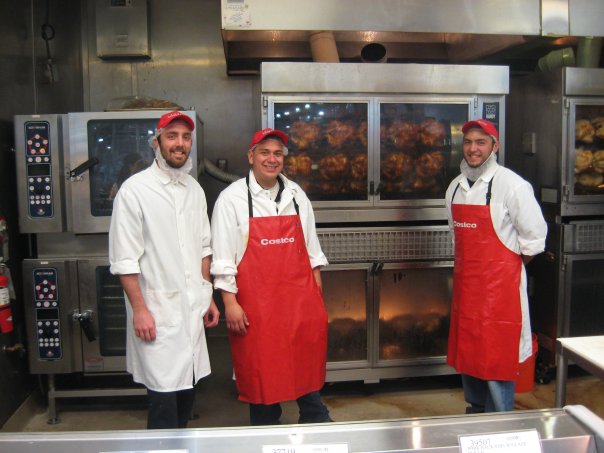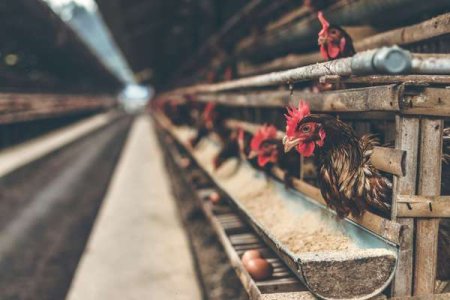
That budget-friendly, irresistible bite might not be the bargain you thought it was..
While tempting deals and crispy combos often steal the spotlight, some low-cost meals come with hidden risks that aren’t listed on the menu. From questionable sourcing to surprise ingredients, what looks like a harmless dinner could be masking a bigger issue.
Whether you're a savvy shopper or just hungry for answers, it's worth taking a closer look before you dig in—because sometimes, the real cost of a cheap meal isn’t found on the receipt.
The shocking inspection results
A new report from the nonprofit group Farm Forward is drawing attention to troubling food safety concerns linked to the supplier behind Costco’s popular rotisserie chickens.
The investigation exposes troubling risks within the poultry production process, raising important questions about what consumers might be sacrificing in exchange for low-cost convenience. Disturbing footage also revealed chickens crammed into overcrowded barns, many bearing visible injuries like open wounds and broken bones.
These conditions not only highlight serious animal welfare issues but also cast doubt on the ethical and safety standards upheld by the companies involved.
As the spotlight turns to sourcing and safety, the findings invite a closer look at how much transparency and accountability come with that convenient, ready-to-eat meal.
According to the report, Lincoln Premium Poultry, the Nebraska-based supplier behind Costco’s signature rotisserie chickens, was flagged for serious food safety concerns.
The facility received the US Department of Agriculture’s lowest rating, Category 3, in a staggering 92% of its inspections, failing 54 out of 59 reviews. These findings raise red flags about oversight and hygiene practices at a plant responsible for millions of ready-to-eat meals.
To grasp the scope of the concern, it helps to look at the numbers: while only about 10% of US poultry plants have fallen short of federal salmonella standards over the past five years, that small percentage includes major producers like Perdue, Foster Farms, Cargill, Butterball, and Lincoln Premium Poultry, which allegedly supply Costco. Because these companies handle such high volumes of chicken, even limited noncompliance can translate into widespread exposure for consumers across the country.
Even a small percentage of food safety violations can have far-reaching consequences, especially when they involve high-volume producers. With Costco selling over 157 million rotisserie chickens in the past year alone, the scale of distribution magnifies the potential impact of contamination.
While the $4.99 price tag has made the product a household staple, growing scrutiny around sourcing and safety practices is casting a shadow over its popularity.
Andrew deCoriolis, executive director of Farm Forward, voiced serious concerns in a recent Los Angeles Times interview, stating: “The USDA (United States Department of Agriculture) is knowingly allowing millions of packages of chicken contaminated with salmonella to be sold in stores from major brands.”
What is salmonella and why should we care?
Salmonella is a harmful bacterium often linked to foodborne illness, especially when found in raw or undercooked meats, eggs, and occasionally produce.
After consuming contaminated items, symptoms like nausea, fever, stomach pain, and diarrhea typically appear within a few hours to several days. While many people bounce back within a week, the infection can pose greater risks for young children, older adults, and individuals with compromised immune systems, sometimes leading to hospitalization and more severe complications.
Salmonella remains a major public health concern in the US, contributing to an estimated 1.3 million cases of illness each year. Of those affected, roughly 19,000 individuals require hospitalization, and more than 400 lives are lost annually due to complications.
While many people recover with mild symptoms such as stomach cramps and diarrhea, the infection can pose serious risks for older adults and others with weakened immune systems, making food safety a critical issue for vulnerable populations.
Federal health officials warn that roughly 1 out of every 25 chicken packages sold in US grocery stores may carry Salmonella.
For many, the risk might seem manageable, but for older adults, young children, and those with weakened immune systems, even a single contaminated meal can lead to serious health complications.
With poultry being a staple in countless households, this statistic serves as a sobering reminder of the importance of safe food handling and stronger oversight.
What’s being done about it?
While the USDA has outlined performance benchmarks for poultry producers, it currently does not enforce a strict nationwide cap on Salmonella levels in raw chicken.
Efforts to tighten these standards gained momentum in 2024, when the agency introduced tougher guidelines aimed at curbing contamination. However, those proposals were rolled back in 2025, leaving producers to operate under the existing framework with limited regulatory pressure.
In response to recent scrutiny, Lincoln Premium Poultry affirmed its commitment to food safety and pledged improvements. Still, the company’s facility has consistently earned the USDA’s lowest rating for Salmonella contamination across multiple years, raising ongoing concerns about oversight and accountability.

Should you be worried about your next chicken dinner?
Costco’s rotisserie chicken hasn’t been subject to a Salmonella-related recall since 2013, and no current alerts have been issued.
According to food safety experts, chicken is generally safe to eat when handled and cooked correctly—this includes washing hands after contact with raw meat, preventing cross-contamination, and ensuring the internal temperature reaches at least 75°C (165°F).
However, rotisserie chickens are sold fully cooked, which means the risk of Salmonella should be minimal if the product was properly prepared and stored. That said, concerns persist.
Cooking chicken to the proper internal temperature is one of the most effective ways to eliminate harmful bacteria like Salmonella. But food safety doesn’t stop at the stove—how you store and reheat leftovers matters just as much.
Improper handling after cooking can reintroduce risks, so it’s essential to refrigerate promptly, reheat thoroughly, and avoid leaving cooked poultry at room temperature for extended periods.
If rotisserie chicken has you second-guessing dinner plans, there’s no shortage of quick alternatives at Costco and other grocery stores. From ready-to-heat lasagnas and vegetable casseroles to plant-based proteins, there’s something for every taste.
And if you’re feeling adventurous, roasting a chicken at home gives you full control over how it’s prepared—no mystery, just comfort food done your way.
We know many of our members are loyal Costco shoppers. Have you noticed any changes in the quality of their rotisserie chicken? Have you ever felt unwell after eating it, or do you have tips for making the most of this budget-friendly meal? Share your experiences and advice in the comments below—let’s help each other stay safe and well-fed!






